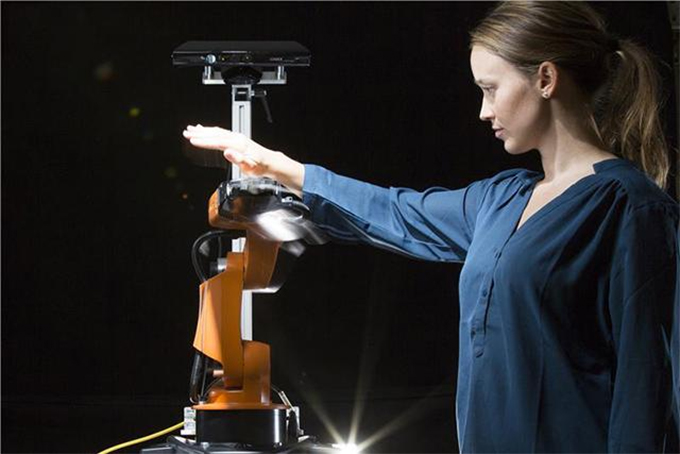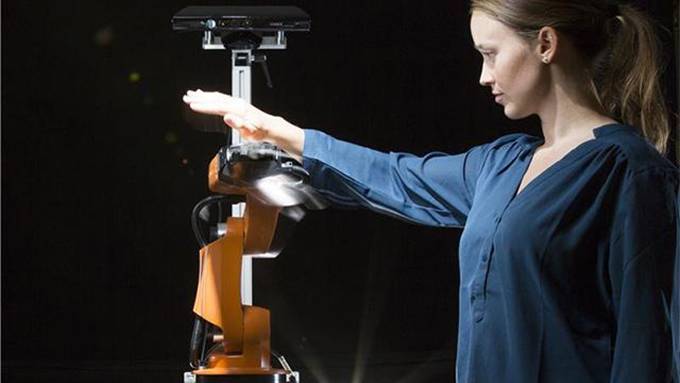Smart robots detect boredom and steer clear of humans
Source: eandt.theiet.org

Human-robot interactions are set to become more complex as the result of research from two separate teams that gives robots more naturalistic movement and conversational abilities.
One team of researchers at Toyohashi University of Technology in Japan has devised artificial intelligence that can take into account the listener's attention and alter its behaviour accordingly.
Another team at Scandinavian research organisation SINTEF has developed a robot that is able to adjust its movements in order to avoid colliding with people and objects around it.
The machine, dubbed Talking-Ally, developed by the Japanese team, follows a person's gaze to determine if they are distracted by another event occurring in the background or something in their surroundings.
The robot bends forward and nods if the person is watching television or it turns its head and looks around if the person is looking elsewhere. These behaviours are accompanied by appropriate speech that is intended to regain the person's attention.
Most existing robots use monologue mechanisms and will continue speaking in the same way even if the person is not paying attention to them.
Experiments have confirmed that the adaptive interaction from the new model considerably increases the other party's attention toward the robot compared with gestures and speech generated without considering the person's gaze.
"We have set up an environment to manipulate the person's attention with an engaging sports program broadcast simultaneously with the human-robot interaction. This allowed us to validate a suite of conversation situations and utterance-generation patterns," said Hitomi Matsushita, first author of a paper on the robot.
"Talking-Ally dynamically determines and synchronizes its body language, turn initials, and entrust behaviours within the speech, according to the person's attention coordinates," researcher Michio Okada explained. "Our analysis shows that this is significantly more persuasive than generating these behaviours randomly."
The Scandinavian team at SINTEF has developed a robot that adjusts its movements in order to avoid colliding with the people and objects around it.
Currently, industrial robots weigh several tonnes and are placed inside netting enclosures to prevent them from colliding with, and causing damage to, people and objects around them. This forces them to remain static and perform repetitive tasks entirely separated from their fellow human operators on the same production line.
The new machines are equipped with light-duty arms that can be easily integrated into existing production systems and are safer to work with. The researchers installed a 3D sensor on the robot which can detect objects in the space around it, and senses where any given object is located in relation to the robot arm.
With this information it is able to avoid contact with humans and objects while operating alongside them.
"We've managed to obtain updates of the robot's movements at a rate of ten times a second", said SINTEF researcher Marianne Bakken. "By combining fast sensor technology with smart algorithms, we can achieve a uniform and seamless manoeuvre."
"In the future we can envisage robots that move around the workplace carrying out tasks without colliding with people or the objects around them."
Bakken has demonstrated the technology (see picture above) by attempting to get close and personal with an orange robot arm, moving in all directions to try to get the robot to collide with her, but it manages to avoid her every time.
Source: eandt.theiet.org






















